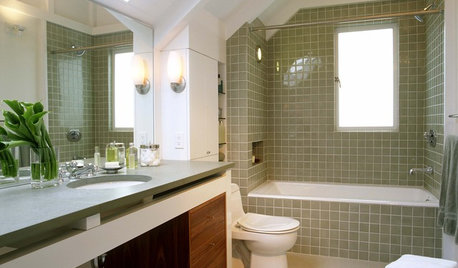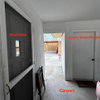Considering widening a doorway.....
chrisexv6
15 years ago
Featured Answer
Comments (17)
sierraeast
15 years agochrisexv6
15 years agoRelated Professionals
Haslett Kitchen & Bathroom Designers · Waianae Kitchen & Bathroom Designers · Fremont Kitchen & Bathroom Remodelers · Shaker Heights Kitchen & Bathroom Remodelers · Cave Spring Kitchen & Bathroom Remodelers · Ashwaubenon Interior Designers & Decorators · Garden Acres Interior Designers & Decorators · Sweetwater Interior Designers & Decorators · Longview General Contractors · Miami Gardens General Contractors · Mount Laurel General Contractors · Roseburg General Contractors · Sulphur General Contractors · Winfield General Contractors · Travilah General Contractorssierraeast
15 years agosierraeast
15 years agomanhattan42
15 years agochrisexv6
15 years agomanhattan42
15 years agomanhattan42
15 years agochrisexv6
15 years agochris8796
15 years agomightyanvil
15 years agomanhattan42
15 years agochrisk327
15 years agoMongoCT
15 years agochris8796
15 years agoedselpdx
15 years ago
Related Stories

WINDOWSOpen Walls Widen Home Possibilities
Doing away with the boundary between indoor and outdoor living, open walls add space, light and drama to a home
Full Story
REMODELING GUIDES10 Terrific Pass-Throughs Widen Your Kitchen Options
Can't get behind a fully closed or open-concept kitchen? Pass-throughs offer a bit of both
Full Story
REMODELING GUIDESWiden Your Space Options With a Dormer Window
Small wonders: Bump out your upper floor with a doghouse, shed or eyebrow dormer — we give you the benefits and budget tips
Full Story
BATHROOM DESIGN12 Things to Consider for Your Bathroom Remodel
Maybe a tub doesn’t float your boat, but having no threshold is a no-brainer. These points to ponder will help you plan
Full Story
MOVINGHome-Buying Checklist: 20 Things to Consider Beyond the Inspection
Quality of life is just as important as construction quality. Learn what to look for at open houses to ensure comfort in your new home
Full Story
FURNITURESpace Savers: Consider the Beauty of Built-Ins
Rooms can work better and more efficiently with the help of built-in furniture pieces. Here’s where to begin
Full Story
GREAT HOME PROJECTSHow to Create a Secret Doorway Behind a Bookcase
Hide your valuables (or unsightly necessities) in a room or nook that no one will guess is there
Full Story
HOUZZ TOURSMy Houzz: Going White and Bright in Montreal
White lacquer and wider doorways help create an airer backdrop for colorful contemporary art in a 1910 Arts and Crafts home
Full Story
GREAT HOME PROJECTS25 Great Home Projects and What They Cost
Get the closet of your dreams, add a secret doorway and more. Learn the ins and outs of projects that will make your home better
Full Story
MOST POPULAR11 Reasons to Paint Your Interior Doors Black
Brush on some ebony paint and turn a dull doorway into a model of drop-dead sophistication
Full Story








sierraeast